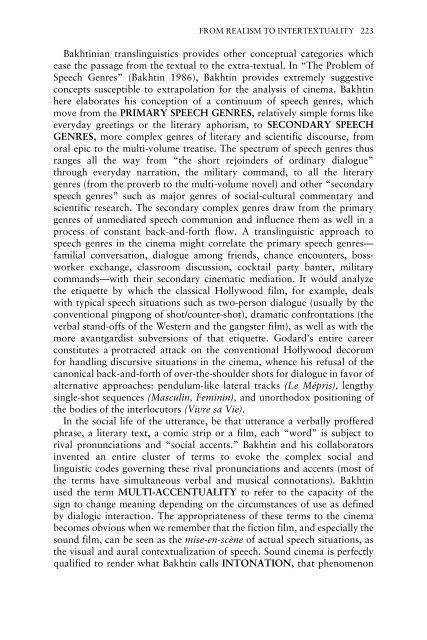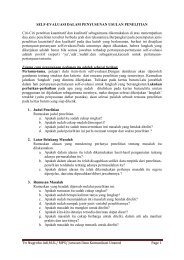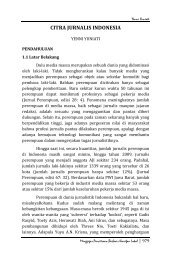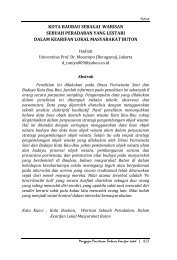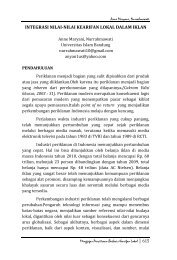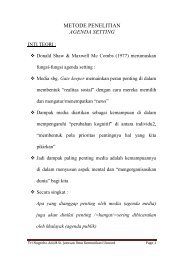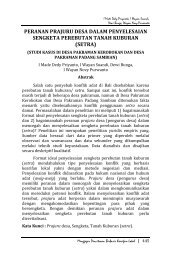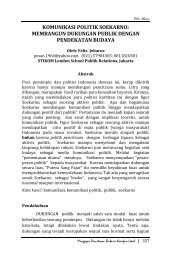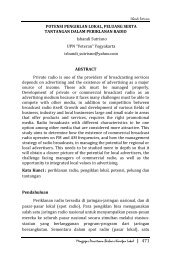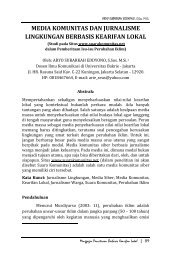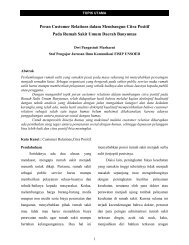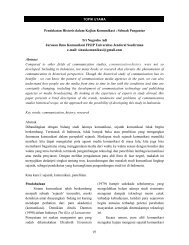New Vocabularies in Film Semiotics
New Vocabularies in Film Semiotics
New Vocabularies in Film Semiotics
You also want an ePaper? Increase the reach of your titles
YUMPU automatically turns print PDFs into web optimized ePapers that Google loves.
FROM REALISM TO INTERTEXTUALITY 223<br />
Bakht<strong>in</strong>ian transl<strong>in</strong>guistics provides other conceptual categories which<br />
ease the passage from the textual to the extra-textual. In “The Problem of<br />
Speech Genres” (Bakht<strong>in</strong> 1986), Bakht<strong>in</strong> provides extremely suggestive<br />
concepts susceptible to extrapolation for the analysis of c<strong>in</strong>ema. Bakht<strong>in</strong><br />
here elaborates his conception of a cont<strong>in</strong>uum of speech genres, which<br />
move from the PRIMARY SPEECH GENRES, relatively simple forms like<br />
everyday greet<strong>in</strong>gs or the literary aphorism, to SECONDARY SPEECH<br />
GENRES, more complex genres of literary and scientific discourse, from<br />
oral epic to the multi-volume treatise. The spectrum of speech genres thus<br />
ranges all the way from “the short rejo<strong>in</strong>ders of ord<strong>in</strong>ary dialogue”<br />
through everyday narration, the military command, to all the literary<br />
genres (from the proverb to the multi-volume novel) and other “secondary<br />
speech genres” such as major genres of social-cultural commentary and<br />
scientific research. The secondary complex genres draw from the primary<br />
genres of unmediated speech communion and <strong>in</strong>fluence them as well <strong>in</strong> a<br />
process of constant back-and-forth flow. A transl<strong>in</strong>guistic approach to<br />
speech genres <strong>in</strong> the c<strong>in</strong>ema might correlate the primary speech genres—<br />
familial conversation, dialogue among friends, chance encounters, bossworker<br />
exchange, classroom discussion, cocktail party banter, military<br />
commands—with their secondary c<strong>in</strong>ematic mediation. It would analyze<br />
the etiquette by which the classical Hollywood film, for example, deals<br />
with typical speech situations such as two-person dialogue (usually by the<br />
conventional p<strong>in</strong>gpong of shot/counter-shot), dramatic confrontations (the<br />
verbal stand-offs of the Western and the gangster film), as well as with the<br />
more avantgardist subversions of that etiquette. Godard’s entire career<br />
constitutes a protracted attack on the conventional Hollywood decorum<br />
for handl<strong>in</strong>g discursive situations <strong>in</strong> the c<strong>in</strong>ema, whence his refusal of the<br />
canonical back-and-forth of over-the-shoulder shots for dialogue <strong>in</strong> favor of<br />
alternative approaches: pendulum-like lateral tracks (Le Mépris), lengthy<br />
s<strong>in</strong>gle-shot sequences (Mascul<strong>in</strong>, Fem<strong>in</strong><strong>in</strong>), and unorthodox position<strong>in</strong>g of<br />
the bodies of the <strong>in</strong>terlocutors (Vivre sa Vie).<br />
In the social life of the utterance, be that utterance a verbally proffered<br />
phrase, a literary text, a comic strip or a film, each “word” is subject to<br />
rival pronunciations and “social accents.” Bakht<strong>in</strong> and his collaborators<br />
<strong>in</strong>vented an entire cluster of terms to evoke the complex social and<br />
l<strong>in</strong>guistic codes govern<strong>in</strong>g these rival pronunciations and accents (most of<br />
the terms have simultaneous verbal and musical connotations). Bakht<strong>in</strong><br />
used the term MULTI-ACCENTUALITY to refer to the capacity of the<br />
sign to change mean<strong>in</strong>g depend<strong>in</strong>g on the circumstances of use as def<strong>in</strong>ed<br />
by dialogic <strong>in</strong>teraction. The appropriateness of these terms to the c<strong>in</strong>ema<br />
becomes obvious when we remember that the fiction film, and especially the<br />
sound film, can be seen as the mise-en-scène of actual speech situations, as<br />
the visual and aural contextualization of speech. Sound c<strong>in</strong>ema is perfectly<br />
qualified to render what Bakht<strong>in</strong> calls INTONATION, that phenomenon


